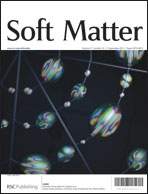A dual-scale model for the caveolin-mediated vesiculation†
Abstract
Caveolae-mediated vesiculation refers to the ∼100 nm cave-like plasma membrane invaginations, which function as macromolecular transport vesicles that regulate cellular function. The initiation of vesiculation is closely associated with


 Please wait while we load your content...
Please wait while we load your content...